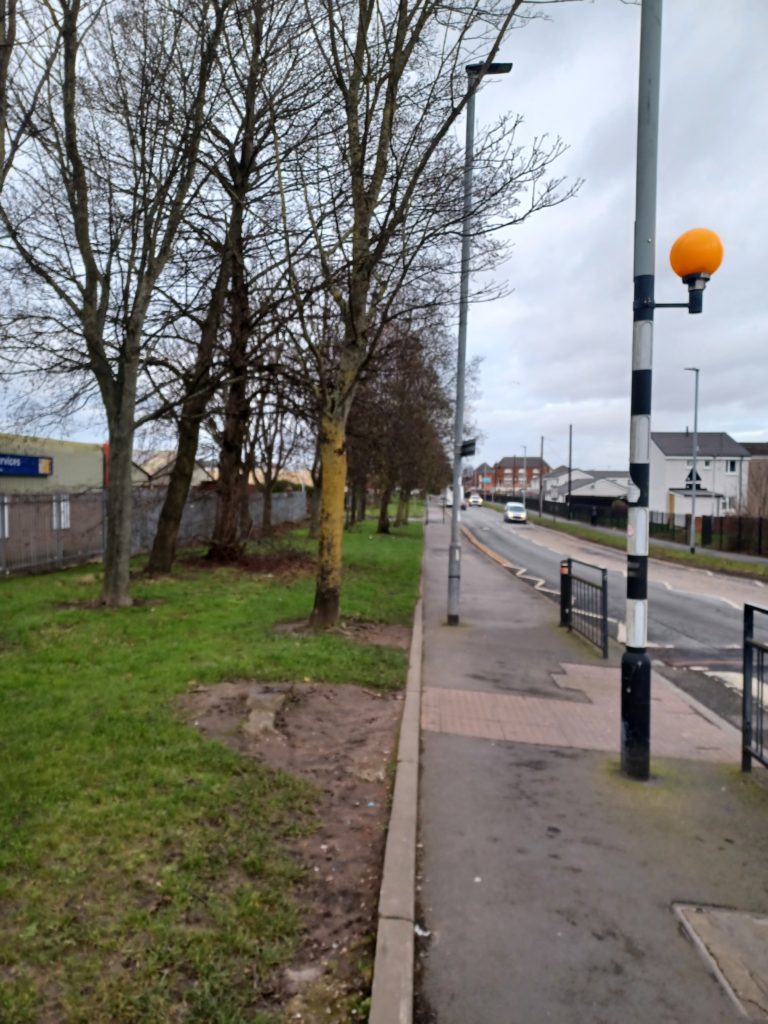
A linear green area is likely to be more biodiverse than isolated ‘islands’. Small mammals, insects, song-birds etc can move along the area without having to cross hostile barren environments. To a field mouse or house mouse a road and two four feet wide pavements is unlikely to be ever crossed, even if the other grass verge is verdant. Birds, of course, can be more flexible but, nevertheless, they may not stray far from home territory. I see the avenue of mature trees down the centre of Queens Gardens has now been felled, as intended, to make the area more appealing to throngs of visitors to the Maritime City exhibits. But what immediate effects has this had on the local biodiversity? Does anyone know? Does anyone care? There are certainly few nearby places for the fauna to escape to.
The photo above shows the west side of Derringham St. looking north. Here, after post-industrial demolition with modern industrial units one side of the road and modern council/private housing on the other, an opportunity has been taken to create a wide grass verge in which 62 young trees were planted, all, I think, native species. These have clearly grown well into young mature trees. As always each tree will have its own intimate biodiversity and make its contribution to biodiversity of this, sort of, green corridor.
A useful source recently discovered is ‘Urban Rambles’ website, of which a section is ‘A brief history of urban green spaces’. Kingston upon Hull is not in the list of towns and cities with designated ‘urban ramble routes’. Initiative needed, as previously stated, Hull is classed as a relatively green city.